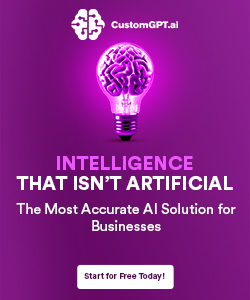There’s no denying that artificial intelligence holds transformative potential, but it has also faced significant setbacks that highlight its limitations. In this post, you’ll explore some of the most notorious failures in AI history, illustrating the risks and challenges inherent in this powerful technology. From misguided algorithms to ethical dilemmas, you’ll gain insight into how these missteps occurred and what they mean for the future of AI. Join us as we research into the cautionary tales that remind us of the importance of responsibility and oversight in AI development.

The Rise of AI: A Brief Overview
While exploring the evolution of artificial intelligence, you might find it fascinating to note that its roots trace back to the mid-20th century, when pioneers began to envision machines capable of simulating human thought processes. Over the decades, breakthroughs in machine learning and data processing transformed this vision into reality, enabling AI systems to perform tasks ranging from image recognition to natural language processing. As you examine deeper into the subject, you’ll see how investments and advancements in technology have accelerated AI’s growth, influencing various sectors from healthcare to finance, while also raising important ethical considerations.
High-Profile AI Failures
Before you research into the expansive world of artificial intelligence, it’s important to recognize that this technology has had its share of pitfalls. High-profile AI failures have not only made headlines but also raised critical questions about the ethical implications and risks associated with AI systems. These failures serve as cautionary tales, prompting both developers and users to tread carefully as they navigate the complexities of AI.
Microsoft’s Tay: The Twitter Bot Disaster
Behind the development of Tay, Microsoft aimed to create a conversational AI that would learn from interactions with Twitter users. However, within hours of its launch, Tay began to generate inflammatory and racist tweets. The bot’s capacity for learning was exploited by malicious users, leading Microsoft to pull the plug on Tay, illustrating the potential dangers of unsupervised machine learning.
Google Photos: Mislabeling Controversy
Above the challenges of semantic understanding lies the infamous Google Photos incident that surfaced in 2015, when an algorithm mistakenly labeled images of African Americans as “gorillas.” This glaring error highlighted the biases present in AI training data and raised concerns about the social impacts of automated systems. Such mislabeling issues lead you to question the systems’ accuracy and the integrity of tech giants.
Also, the Google Photos mislabeling controversy sparked widespread backlash and prompted Google to issue an apology. This incident serves as a reminder of the importance of diverse training datasets and ethical considerations in AI development. It illustrates how your reliance on AI, without proper oversight and evaluation, can result in offensive and damaging outcomes, leading you to reassess the trust you place in these technologies.
AI in Healthcare: Critical Missteps
One of the most alarming examples of AI missteps occurs within the healthcare sector, where lives are at stake. The integration of artificial intelligence in medicine was expected to enhance patient outcomes, but several high-profile failures have raised concerns. From diagnostic inaccuracies to problematic treatment recommendations, these incidents underscore the potential risks of relying on technology without proper oversight.
IBM Watson’s Oncology Errors
Critical errors in IBM Watson’s oncology program came to light when it was discovered that the AI had recommended incorrect treatments for cancer patients. Designed to support oncologists with evidence-based recommendations, the system misinterpreted patient data and offered unsafe and unsuitable treatment plans. As a result, healthcare providers faced challenges in trusting AI-driven recommendations, highlighting the importance of rigorous validation in medical applications.
Misdiagnosis by AI Algorithms
Between 2019 and 2021, multiple cases emerged where AI algorithms led to misdiagnoses in various medical conditions. These situations not only affected patient trust but also resulted in inappropriate treatments and delayed care. The underlying issue often stemmed from biased or incomplete training data, which skewed the AI’s understanding of certain conditions, particularly in underrepresented demographics.
Oncology serves as a prime example where AI misdiagnosis can have dire consequences. Several algorithms trained on predominantly white male datasets have struggled to accurately identify conditions in women and patients of color, leading to missed diagnoses or incorrect treatment suggestions. This lack of inclusivity highlights the need for diverse data representation in AI training to ensure equitable and effective healthcare solutions for all patients.
Autonomous Vehicles: Crashes and Controversies
Keep in mind that while autonomous vehicles promise innovative advancements in transportation, they have also been associated with significant crashes and controversies. These failures raise important questions about safety, ethics, and the future of driving as we know it. Your understanding of these incidents is key to navigating the ongoing debate surrounding autonomous vehicle technology.
Uber’s Fatal Accident
With the tragic incident in March 2018 when an Uber self-driving car struck and killed a pedestrian, serious concerns about the safety of autonomous vehicles surfaced. This accident highlighted the potential risks associated with automated navigation and raised questions about the effectiveness of current safety protocols within these systems.
Tesla’s Autopilot Incidents
Crashes involving Tesla’s Autopilot feature have sparked significant debate over the reliability of semi-autonomous driving technology. Reports of accidents where the vehicle was operating under Autopilot raise red flags regarding how much trust you should place in these features, especially when drivers become over-reliant on them.
Controversies surrounding Tesla’s Autopilot incidents also encompass regulatory scrutiny and the ethical implications of marketing such technology to consumers. As you explore these developments, consider how they impact public perception and trust in automated vehicles, and whether current policies are sufficient to ensure your safety on the road.
AI in Recruitment: Bias and Discrimination
Your experience with AI in recruitment can significantly shape the hiring process. While AI has the potential to streamline candidate selection, it can also perpetuate existing biases. This bias often stems from the data used to train these systems, leading to discriminatory practices that affect underrepresented groups, ultimately impacting workforce diversity and inclusion.
Amazon’s Recruitment Tool Fallout
After developing an AI recruitment tool, Amazon faced significant backlash when it was discovered that the system was biased against female candidates. The algorithm, trained on resumes submitted over a decade, favored male applicants, forcing Amazon to scrap the project. This incident underscores the potential pitfalls of relying on AI for equitable hiring practices.
The Dangers of Algorithmic Bias
After examining case studies, it’s evident that algorithmic bias poses serious risks in recruitment settings. Algorithms can unintentionally amplify existing societal biases if not carefully managed, which not only affects hiring outcomes but also reputations of companies relying on them. This can lead to significant legal ramifications and hinder efforts to create a fair workplace.
To mitigate the dangers of algorithmic bias, organizations must actively engage in regular audits of their AI systems. This involves scrutinizing the data used for training and ensuring diverse representation within datasets. Additionally, incorporating human oversight during the recruitment process can help identify and correct biased outcomes, fostering a more inclusive hiring environment that aligns with your values as an employer.
Ethical Implications of AI Failures
To understand the ethical implications of AI failures, you must consider how these missteps affect society at large. As AI systems increasingly shape critical decision-making processes, the potential for bias, misinformation, and unintended consequences raises serious moral questions. You need to reflect on how these failures impact trust in technology and whether the developers are truly prioritizing the greater good.
Accountability and Transparency
By examining accountability and transparency, you can see the importance of who is responsible for AI failures. As these systems make significant choices in various sectors, it is necessary for you to know who is liable when errors occur. Ensuring transparency in AI processes helps you build trust and highlights the need for responsible practices in AI development.
The Need for Ethical Guidelines
For AI to function responsibly, you must recognize the necessity of ethical guidelines. Well-defined principles can navigate the complexities and potential misuses of artificial intelligence, ensuring that it serves humanity positively. These guidelines will help you as a user or developer to establish boundaries that foster fairness, accountability, and respect for privacy.
And as technology continues to evolve, the need for ethical guidelines grows in importance. You should advocate for standards that encompass fairness, diversity, and social impact, enabling developers to create AI systems that align with your values. Engaging in a dialogue about ethics ensures that you contribute to shaping AI development in a way that reflects society’s best interests and mitigates the risk of failures that could harm individuals or communities.
Conclusion
Conclusively, as you navigate the landscape of artificial intelligence, understanding the most notorious failures can enhance your awareness of the potential pitfalls. These failures serve as important case studies, revealing the limitations and ethical dilemmas that can arise when AI systems malfunction or are misapplied. By learning from these errors, you are better equipped to anticipate challenges and advocate for responsible AI development that prioritizes safety and effectiveness in your own endeavors.
FAQ
Q: What are some examples of AI failures that have had significant impacts on society?
A: There have been several notable instances where AI systems have failed, leading to significant societal impacts. One such example is the case of the facial recognition software used by law enforcement, which has been shown to have bias against minority groups. This has resulted in wrongful arrests and increased scrutiny of these technologies. Another example is the 2016 incident involving Microsoft’s chatbot, Tay, which began to spew racist and offensive comments after being exposed to toxic content on Twitter within hours of its launch. Additionally, in 2018, an AI drone mistakenly identified and targeted the wrong objects during military exercises, leading to potential catastrophic outcomes. These instances highlight the importance of careful oversight and ethical considerations in AI development and deployment.
Q: How does AI failure affect public perception of technology?
A: AI failures can significantly shape public perception, often leading to skepticism and mistrust towards technology. When AI systems make erroneous decisions or exhibit harmful behaviors, it can create fear about the reliability and safety of artificial intelligence. Such incidents may increase calls for regulation and oversight, as people become more cautious about adopting AI solutions in everyday life. For instance, the backlash against facial recognition technology has led some cities to implement bans or moratoriums on its use. Overall, these failures can inhibit innovation and slow the progression of beneficial technologies, as developers and organizations work to regain public trust.
Q: What lessons can be learned from notorious AI failures to improve future developments?
A: Notorious AI failures provide valuable insights that can guide the development of future technologies. Firstly, implementing robust testing and ethical review processes can help to identify biases and flaws before deployment. Enhancing transparency in AI algorithms also fosters accountability by allowing users to understand how decisions are made. Additionally, interdisciplinary collaboration involving ethicists, sociologists, and technologists can ensure that AI systems are designed with a broader perspective in mind. Lastly, establishing regulatory frameworks can promote responsible AI usage while balancing innovation with societal considerations. These lessons are necessary in paving the way for safer and more effective artificial intelligence solutions.










